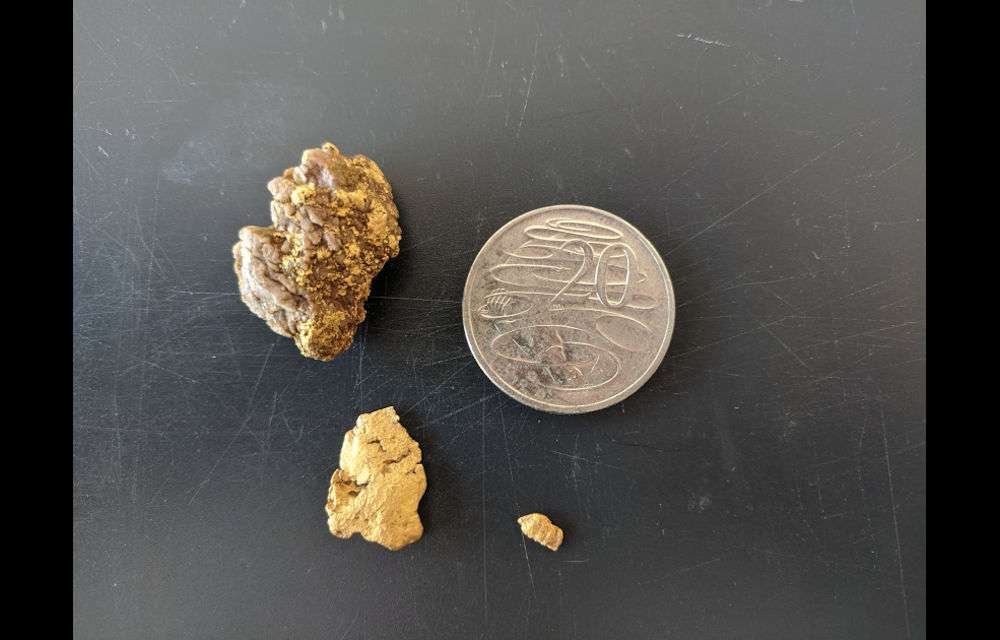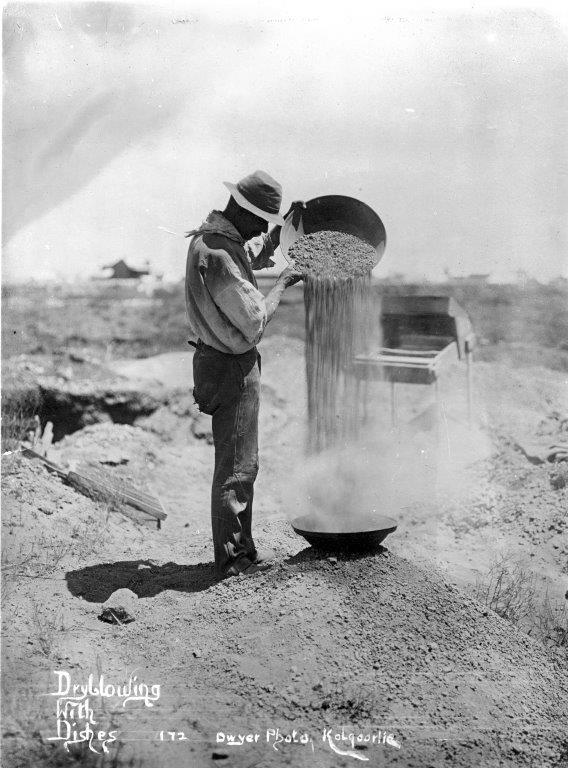
Finding Gold in Western Australia
With the recent record high gold price, gold prospecting in Western Australia is increasing in popularity, especially due to the abundance of gold that has historically being found, and is still being found in WA.

The Western Australian goldfields were the site of some of the most significant gold discoveries in Australian history. The Strzelecki River, near what is now Kalgoorlie, was the one of the first site’s to be discovered in 1892. Soon after, gold was also found at Coolgardie and at Norseman, both in 1897.
The original gold prospectors of the late 1800’s found and extracted surface alluvial gold. This is gold that is close together and usually located in ancient river channels, but it didn’t take long for the next influx of prospectors to discover that the gold could be found in high concentrations in solid rock that they started mining underground.
In 2021, WA produced over 207 tonnes of gold worth a staggering $16.5 billion!
Although the “easy” surface gold deposits have been largely depleted, there is still gold to be found in Western Australia, and many people continue to prospect for gold today. And new gold bearing locations are still being found across the state that have never been prospected before.
Table of Contents
The Best Places to Go Gold Prospecting in Western Australia.
When it comes to finding gold, Western Australia is a prime spot. With its wide variety of geological features and landscapes, there are plenty of places where gold could be hiding. Here are some of the best places to start your search.
In the Goldfields region, the Kalgoorlie-Boulder area is a well-known hotspot for gold prospectors. The area was originally rich in alluvial gold deposits with many abandoned mines in the area for you to explore around.
Don’t go down any old mine shafts – too dangerous!
Recently, some sizeable gold nuggets, weighing many ten’s of ounces, was found just south of Kalgoorlie, by a prospector using a relatively modern metal detector.
If you’re looking for a challenge, head to the Pilbara region in North West Western Australia. This remote area is known for its rugged terrain and difficult-to-reach locations. But it’s also home to some of the richest gold deposits in the state. If you’re looking for something a little bit more off the beaten track, try the Kimberley region. This remote area is made up of several isolated communities and is home to some of Australia’s most unique wildlife.
The best time to look for gold in Western Australia is from March to November (Autumn – Spring), as Summer is just too hot with temperatures regularly reaching 45 deg centigrade or higher!
Types of Gold Deposits found in Western Australia.
Gold generally occurs in two different deposit types.
1 – Free gold (alluvial or elluvial gold). This is gold that occurs loose in the soil profile. It can occur in all sizes from flour gold all the way though to large nuggets weighing more than a few kilograms in weight. Alluvial gold deposits occur when the gold is concentrated together, due to the actions of flowing water, such as in rivers or creeks. Of course, many of these alluvial deposits are the result of ancient river systems that have long since disappeared.
Elluvial gold occurs because of gold breaking away from its source and rolling down a hill such as on a screen slope. Usually such gold is located not far from its original source.
2 – Hardrock Gold. This is gold that usually occurs within hard quartz veins, that were originally injected into the rock billions of years ago. These quartz veins, are the results of molten magma, moving around in the depths of the earth, at depths of 10 or more kilometres. After billions of years of erosion, these ancient gold bearing quartz veins, are now much closer to the earth’s surface, suitable for modern day miners to reach them.
Most beginner gold prospectors, initially try to locate the alluvial and elluvial gold first, and once their skills have improve, they may try their hand at some hard rock gold prospecting.
Equipment That is Needed for Gold Prospecting in Western Australia.
To legally prospect for gold in Western Australia, you must legally obtain a “Miner’s Right” from the WA Mines Department (visit https://www.dmp.wa.gov.au/Minerals/Miners-Rights-2427.aspx ).
This document legally allows you to prospect for gold and gems on any Crown land in Western Australia (there are exceptions such as national parks, nature reserves etc – See Mine’s Dept documentation for the full list). If the Crown land is covered by tenements ( also called leases or claims), and the tenement is Live, then you cannot prospector on that lease without written permission of the leaseholder.
If the tenement is pending – that means it is awaiting approval from the Mines’ Department to go live, then you can legally prospect on that lease.
To prospect on freehold land, you do not need a Miner’s Right, but you do need to get the written permission of the land owner.
Other equipment can be as simple as a gold pan, or as complicated and expensive as you want. It all depends on your budget.
Every prospector should have a gold pan, a miner’s pick (some call it the geologists, or geo pick); some geological maps showing mineral occurrences and a decent GPS.
Once your budget allows, you can get yourself a dedicated Pulse Induction metal detector (VHF metal detectors don’t handle the highly mineralised soils of WA), will help you cover more ground and theoretically you find more gold.
Before you start prospecting, it is important to learn about the area where you will be working. Make sure to research the types of rocks and soils that are common in the area. This information will help you to identify potential gold-bearing areas.
Gold prospecting in WA has been occurring for over 150 years and every week, there are stories of amateur gold prospectors finding sizeable deposits of gold. Some large enough to be life changing.
So, get yourself a Miner’s Right from the WA Mines Department; and start prospecting for gold in Western Australia!